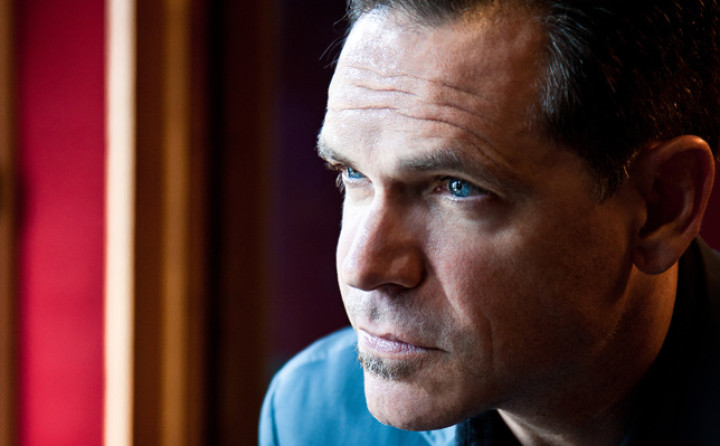Track By Track von Kurt Elling – “1619 Broadway – The Brill Building Project”

17.10.2012
Letzte Woche haben wir Ihnen das neue Album “1619 Broadway – The Brill Building Project” von Kurt Elling vorgestellt. Heute erreichte uns eine Track By Track-Beschreibung, in der Kurt Elling höchstpersönlich den Hintergrund der Songs, die er für sein Album neu vertont hat, erklärt. Auf Spotify gibt es nun eine Playlist, in der sowohl die Interpretationen Ellings, als auch die Originalversionen der einzelnen Songs zu hören sind.
1. On Broadway
“On Broadway,” begun by Barry Mann and Cynthia Weil and completed in collaboration with Jerry Leiber and Mike Stoller, was originally recorded by The Cookies, and was released as an attempt to broaden the appeal of R&B to new audiences. Phil Spector was an apprentice to Leiber and Stoller at the time the song was written, and he played the guitar solo on The Drifters’ recording of the tune. The song was made even more famous by George Benson, whose version of the song received the 1978 Grammy® Award for Best R&B Vocal Performance.
2. Come Fly With Me
Sammy Cahn and Jimmy Van Heusen wrote “Come Fly With Me” for Frank Sinatra. Van Heusen’s lyric was inspired by his WWII days, which he spent moonlighting as a part-time test pilot. Jimmy Van Huesen’s work is not immediately identified with the Brill Building. However, Van Huesen was a song plugger for Remmick Music Publishing for many years in The Brill before beginning work there with his early writing partner Eddie de Lang – with whom he wrote “Darn That Dream” and “Deep in a Dream.”
3. You Send Me
Sam Cooke recorded “You Send Me” while he was signed to a Gospel label. It reached number one on both the Pop Singles and Black Singles charts in 1957, distinguishing it as one of the first great crossover hits.
4. I Only Have Eyes For You
“I Only Have Eyes For You” was written for the 1934 film Dames, starring Joan Blondell, Dick Powell and Ruby Keeler. Since its 1934 release, over 40 artists from genres as disparate as folk, jazz, pop, and soul have covered the song – including Frank Sinatra, Ella Fitzgerald, Art Garfunkel, Corinne Bailey Rae, and Rod Stewart. The iconic 1959 recording of the song by The Flamingos helped to define the sound that brought The Brill into its so-called “Golden Era.”
5. I’m Satisfied
Released as the B-Side on a 1968 Lou Rawls 7” LP, “I’m Satisfied” became famous for being the theme song of the 1986 film, Duffy. This is only the second recording of the tune.
6. A House Is Not A Home
Burt Bacharach and Hal David’s “A House Is Not A Home” was first recorded in 1964 by Dionne Warwick as a B-side to the Top 40 single “You’ll Never Get To Heaven (If You Break My Heart).” It has been recorded by a remarkable range of artists, including Barbra Streisand, Sonny Rollins, Sponge Bob, Stevie Wonder, the cast of Glee, Ella Fitzgerald, Aretha Franklin, Perry Como, and by Kanye West and Jamie Foxx. Perhaps the most memorable version of this classic was recorded by the late, great Luther Vandross.
7. Shoppin’ For Clothes
Arguably a precursor to rap, “Shoppin’ For Clothes” was originally released in 1956 by Boogaloo and His Gallant Crew. It was made famous by The Coasters’ 1960 recording, which peaked at number 83 on the Pop chart. During live performances, The Coasters would wheel out clothing racks and act out parts of the song.
8. So Far Away
Carole King wrote “So Far Away” for her 1971 classic, Tapestry, which, with more than 25 million copies sold worldwide, is one of the most popular albums of all time, retaining the number 1 position on the Billboard 200 for fifteen consecutive weeks. The song peaked at number 3 on the Adult Contemporary chart, and at number 14 on the Pop Singles chart for the week of October 9, 1971. While this song was composed after the composer had left the Brill, the influence of the time spent there developing as a songwriter made this song possible.
9. Pleasant Valley Sunday
The Monkees recorded this song in 1967, and it charted at number 3 on the Billboard Hot 100 for the week of August 19, 1967. The song’s title and lyrics were inspired by Pleasant Valley Way, a street the New York suburb of West Orange, New Jersey, where Carole King and Gerry Goffin lived at the time they wrote the song. While this song was composed after the composer had left the Brill, the influence of the time spent there developing as a songwriter made this song possible.
10. American Tune
Paul Simon’s haunting melody is based on a line from the Chorale of Bach’s St. Matthew Passion. The lyrics offer a perspective on the American experience that deals with struggle, hard work, and a fading American dream. While this song was composed after the composer had left the Brill, the influence of the time spent there developing as a songwriter made this song possible.
11. Tutti for Cootie
“Tutti for Cootie” is an up-tempo, swinging blues, written in tribute to Duke Ellington’s famed trumpeter, Cootie Williams. The original features both growl and plunger styles of trumpet soloing. Both Duke Ellington himself and Ellington’s publisher (and some-time co-writer) Irving Mills had offices within the Brill Building for many years.
Start
News und Rezensionen
Track By Track von Kurt Elling – “1619 Broadway – The Brill Building Project”
Mehr von Kurt Elling